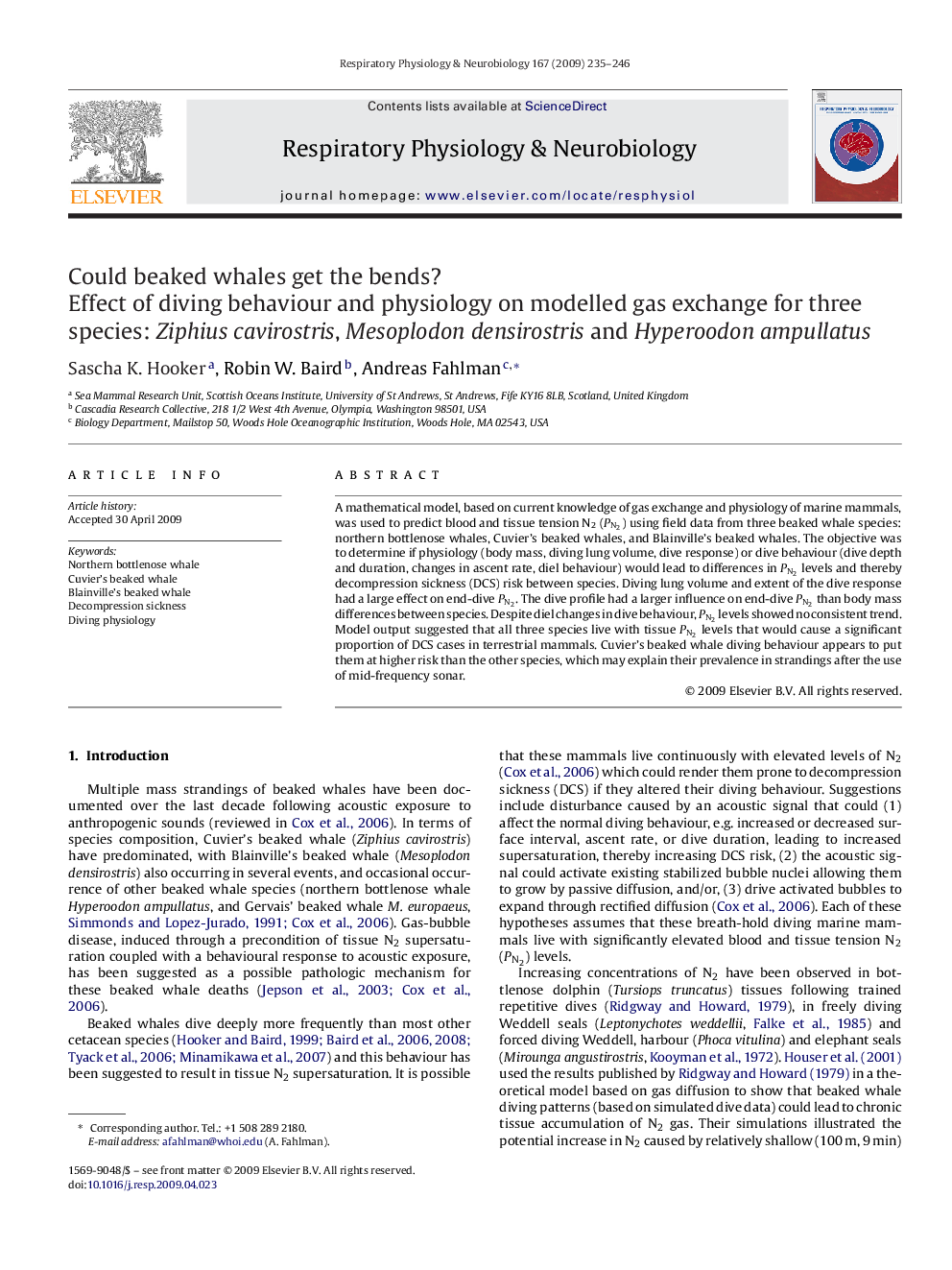| Article ID | Journal | Published Year | Pages | File Type |
|---|---|---|---|---|
| 2847891 | Respiratory Physiology & Neurobiology | 2009 | 12 Pages |
A mathematical model, based on current knowledge of gas exchange and physiology of marine mammals, was used to predict blood and tissue tension N2 (PN2PN2) using field data from three beaked whale species: northern bottlenose whales, Cuvier's beaked whales, and Blainville's beaked whales. The objective was to determine if physiology (body mass, diving lung volume, dive response) or dive behaviour (dive depth and duration, changes in ascent rate, diel behaviour) would lead to differences in PN2PN2 levels and thereby decompression sickness (DCS) risk between species. Diving lung volume and extent of the dive response had a large effect on end-dive PN2PN2. The dive profile had a larger influence on end-dive PN2PN2 than body mass differences between species. Despite diel changes in dive behaviour, PN2PN2 levels showed no consistent trend. Model output suggested that all three species live with tissue PN2PN2 levels that would cause a significant proportion of DCS cases in terrestrial mammals. Cuvier's beaked whale diving behaviour appears to put them at higher risk than the other species, which may explain their prevalence in strandings after the use of mid-frequency sonar.
